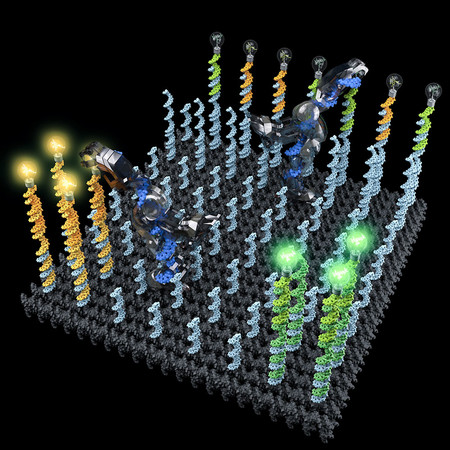Caltech researchers have created a nanoscale biological robot from a single strand of DNA, which can carry and deliver molecular cargo according to an article published Thursday in the journal Science.
Lulu Qian, senior author of the paper and assistant professor of bioengineering at the Institute, said that their research would only bear true fruit if it inspired more colleagues to keep working in the field of molecular robotics.
While these DNA robots are not machines in the traditional sense, scientists have been able to engineer them in a way they can act just like any other, since biology and nature did most of the work already.
Are these nanobots truly made out of DNA?
In principle, the robots themselves are not DNA strands designed as the double helix we all know from school but instead are made up of the components that make up their nucleotides.
Some might remember what these are called, either by their initials ATCG or by their actual names adenine (A), thymine (T), cytosine (C), and guanine (G). These usually pair up and form strands like the ones we know, but they can also be manipulated to create other structures.
Nanoscale robots are among those structures, although Dr. Qian points out that these modified bodies of DNA are more like a limp molecule that attaches itself to others as it seeks the cargo it is supposed to transport. It has a leg, two feet, an arm, and a hand to grab molecules.
How do these DNA robots work?
While robots and machines are programmable by means of computer code, scientists rely solely on chemistry to make these DNA robots move around, fetch and deliver cargo to their intended destination across surfaces and, eventually, the body itself.
Using the same pairing principle that we learned in school, specialists are able to drive the robots toward the molecules they want to transport and then direct them to their delivery point.
In order to test this moving mechanism, researchers over at Caltech demonstrated their proof of concept by designing a 58 by 58-nanometer pegboard. They spread different molecules in different pegs, and then the robots get attracted to them due to their chemical composition.
In this way, they can make their way through the board as the robots’ feet zip with their molecular counterparts until reaching the desired molecule they want to carry. The hand “grabs” it and then a different chemical signal stemming from another peg tells them where to put it.
The principle is the same with other molecules and multiple robots can work together to complete tasks faster. Theoretically, such a model could be used to “build” medicine within the body and store it for its eventual release whenever the DNA robots detect a chemical signal that tells them to do so.
Source: Science



